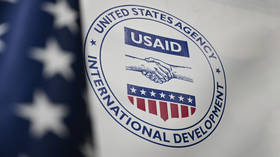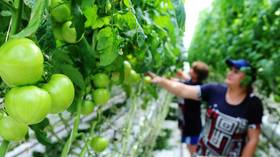East Asia poverty to rise for first time in 20 years due to Covid-19 pandemic – World Bank
A new report by the World Bank reveals that Covid-19 delivered a “triple shock” to the developing East Asia and Pacific region, with as many as 38 million people expected to remain in, or be pushed back into, poverty as a result.
It is the first increase in poverty in the region in two decades, according to the findings. The bank defined the poverty line as income of $5.50 a day. The East Asia and Pacific (EAP) region includes China, Southeast Asian countries and the Pacific Islands, such as Fiji and Samoa. India and other South Asian countries don’t feature in the report.
“Covid-19 has delivered a triple shock to the developing East Asia and Pacific (EAP) region: the pandemic itself, the economic impact of containment measures, and reverberations from the global recession brought on by the crisis,” the report reads.
QUIZ: #COVID19 threatens to create "new poor" – with the number of people in poverty in #EastAsiaPacific expected to increase by up to _______ in 2020. #EAPUpdate
— World Bank Asia Pacific (@WB_AsiaPacific) September 29, 2020
The region as a whole is expected to grow by only 0.9 percent in 2020, the lowest rate since 1967. While China is forecast to grow by 2.0 percent in 2020 – boosted by government spending, strong exports and a low rate of new Covid-19 infections since March, but checked by slow domestic consumption – the rest of the EAP region is projected to contract by 3.5 percent. Mongolia is likely to experience its first recession since 2009, with economic output projected to contract by 2.4 percent in 2020, as weak external demand and Covid-19 containment measures hit, particularly in the mining and services sectors.
“Sickness, food insecurity, job losses, and school closures could lead to health and learning losses that could last a lifetime. The poor will be disproportionately disempowered because of worse access to hospitals, schools, jobs, and finance,” the World Bank said, adding that “scars” left behind by the Covid-19 crisis could last for many years.
Also on rt.com The worst is yet to come: Another 176 mn people worldwide could fall into poverty after pandemic, UN warnsAccording to Victoria Kwakwa, Vice President for EAP at the World Bank, the pandemic “is not only hitting the poor the hardest, it is creating ‘new poor.’” She explained that “the region is confronted with an unprecedented set of challenges, and governments are facing tough choices,” adding that there are “smart policy options available that can soften these tradeoffs.”
The region’s economic growth is forecast to jump by 7.4 percent next year, with China projected to register the largest expansion of 7.9 percent.
For more stories on economy & finance visit RT's business section















